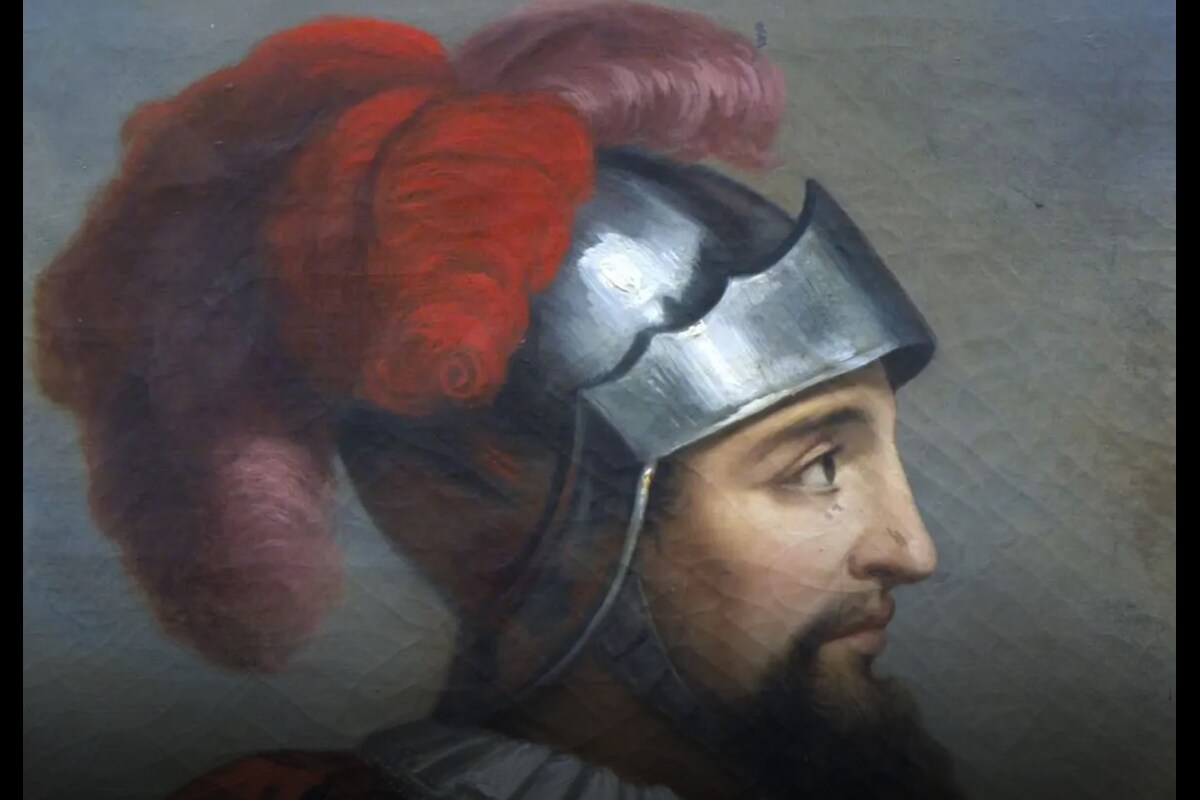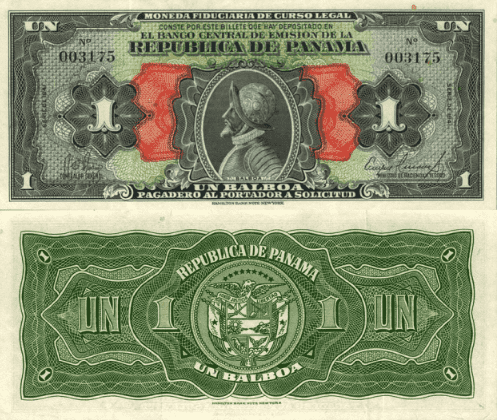History of the Panamanian Balboa: From Past to Present
Are you captivated by the allure of currency history and the stories embedded within each coin? Got a collection of coins from every nook and cranny of the globe? You're at the right place because this blog post is your passport to the intriguing saga of the Panamanian balboa.
The official currency of Panama has a long and rich history spanning over five centuries, dating back to the time the first Spanish explorer, Vasco Núñez de Balboa, set foot on the isthmus of Panama. Join us as we trace the intriguing history and evolution of the Panamanian balboa from its inception to the currency we know today.
We will explore the origins, evolution, and features of the Panamanian balboa and how it reflects the culture, politics, and economy of Panama.
The History of Panama Currency: The Birth of the Balboa
First things first – Why is Panama money called balboa? Well, the national currency of Panama, the Panamanian balboa, is named after Vasco Núñez de Balboa – the Spanish explorer who discovered the Pacific Ocean in 1513 after crossing the isthmus of Panama.

He was the first European to see the vast body of water that separates North and South America from Asia, claimed it for the Spanish crown, and established the first permanent European settlement in Panama, Santa María la Antigua del Darién. Balboa’s discovery opened the way for international trade and colonization in the region, and he became the governor of the province of Panama.
1904 – The Cornerstone
His legacy is honored by the Panamanian people, who adopted his name for their currency in 1904 when Panama gained its independence from Colombia. The balboa replaced the Colombian peso, which had been the official currency of Panama since 1821 when Panama joined the Gran Colombia, a federation of former Spanish colonies. The balboa was equivalent to the US dollar right from the start and backed by silver coins minted in Panama.
As liberty prevailed, the wave of change brought forth the debut of fresh silver coins in values of 2 1/2, five, 10, 25, and 50 céntimos. Subsequently, the currency expanded to encompass denominations of one-tenth, one-fourth, one-half, 1 1/4, and one céntimo. These Panamanian coins not only mirrored the size but also replicated the metallic composition akin to those found in the coinage issued by the United States, adding a fascinating layer to the evolving currency landscape.
The Dual Currency System
The Panamanian balboa is part of a unique currency arrangement that allows Panama to use both the Balboa and the US dollar. This system, known as the dual currency system, was established in 1904 when Panama signed a treaty with the United States and adopted the US dollar as its legal tender, granting the latter the right to build and operate the Panama Canal – a strategic waterway that connects the Atlantic and Pacific oceans.
In exchange, the US agreed to provide Panama with economic and military assistance and to guarantee its sovereignty and independence. The dual currency system has several advantages for Panama, such as:
- It facilitates financial transactions and international trade with the US and other countries, as the US dollar is widely accepted and trusted around the world and considered a "safe-haven" currency.
- It eliminates the risk of currency exchange rate fluctuations and currency devaluation, as the Balboa is pegged to the US dollar at a fixed rate of one-to-one (1:1), with the dollar being a reliable currency.
However, it also has some drawbacks, such as:
- It limits the autonomy and flexibility of the Panamanian government to respond to economic shocks or crises, as it cannot use monetary policy tools such as interest rates or inflation targets to adjust the economy.
- It exposes Panama to the economic conditions and policies of the US, as any changes in the US dollar’s value or demand can affect the Panamanian economy.
- It creates a dependency on the US, as Panama has to rely on the US for its currency reserves and liquidity.
Despite these challenges, the dual currency system has proven to be successful and beneficial for Panama, as it has contributed to its economic development and annual growth.
The Rise and Fall of the Balboa Banknotes
The Balboa coins enjoyed a period of stability and popularity until the 1930s when the global economic crisis and the devaluation of the US dollar affected the exchange rate and the value of the Balboa. The Panamanian government, with President Dr. Arnulfo Arias, decided to introduce paper money, or banknotes, in 1941, which were also equivalent to the US dollar and issued by the Banco Central de Emisión de la República de Panamá.

The banknotes were printed in denominations of 1, 5, 10, 20, and 50 Balboas and featured the portraits of prominent Panamanian figures. However, the banknote issue was short-lived. A mere week later, a military coup ousted Arias from power, replacing him with Ricardo Adolfo de la Guardia Arango. The Banco Central de Emisión was dissolved in 1949, and all Balboa banknotes were withdrawn from circulation.
The remnants of these banknotes are now rare treasures, known colloquially as the "Seven Days’ Notes" or the "Arias issues," and hold significant value among collectors to this very day.
The Pulse of the Panamanian Economy
The Panamanian government faced several political and economic challenges in the following decades, such as corrupt governments, fraudulent elections, military coups, and US interventions. The Balboa coins remained in use, but they were overshadowed by the US dollar, which became the dominant currency for daily transactions and international transactions.
Throughout this period, Panama continued to use U.S. banknotes alongside the Balboa, emphasizing its strong economic ties with the U.S. Wondering what currency is mostly used in Panama? The Balboa coins are mostly used for small change and everyday transactions, while the US dollar is used for larger purchases and savings. Panama's economy relies predominantly on the services sector, constituting nearly 80% of its GDP.
What about the modern times? In the third quarter of 2023, Panama's economy showed significant growth, expanding by 9% compared to the previous year. Looking at the broader trend, the country's Gross Domestic Product (GDP) Annual Growth Rate has seen an average increase of 5.91% from 2010 to 2023.
Notably, the second quarter of 2021 witnessed a remarkable high with a growth rate of 43.90%, while the second quarter of 2020 experienced a record low with a decline of -36.20%. These figures reflect the dynamic nature of Panama's economic performance in recent years. If you plan on travelling, check out our guide for more info.
The Features of the Panamanian Balboa
The Panamanian balboa currency code is PAB (numeric: 590) and is composed of coins in denominations of 1, 5, 10, 25, and 50 cents or 100 centésimos, and 1 and 2 Balboas. The coins are issued by the National Bank of Panama, one of the two public banks in the country since Panama has never had an official central bank. The coins are mostly used for everyday transactions, such as buying groceries, paying bus fares, or tipping service workers.
What does Panamanian balboa look like? The Balboa coins have various designs and motifs that reflect the historical significance and national symbols of Panama, such as the bust of Vasco Núñez de Balboa, the namesake of the currency, on the obverse of the 1 Balboa coin, and the coat of arms of Panama on the reverse.
The Panamanian balboa does not have any banknote issue, as the US dollar is used for large transactions and international transactions. The US dollar bills circulate freely in Panama and are accepted by all businesses and institutions. The US dollar bills are also known as private currency, as the Panamanian government does not issue them, but by the Federal Reserve System of the US.
Ready to sell?
Are you ready to sell your currency? Stop waiting and request a Shipping Kit. We will provide everything you need to ship and receive funds for currencies you own.
Evolution of Panamanian Balboa Coins
Let's explore the journey of Panamanian balboa coins from their humble beginnings to the present day.
- 1904: Introduction of silver coins in denominations of 2+1⁄2, 5, 10, 25, and 50 centesimos, with the 2+1⁄2 centesimos coin earning the moniker "Panama Pill" or "Panama Pearl" for its petite size and weight of 1.25 grams.
- 1907: Copper-nickel 1⁄2 and 2+1⁄2 centesimos coins join the currency landscape.
- 1929: Copper-nickel 5 centesimos coin makes its debut.
- 1930: Introduction of coins denominated in 1⁄10, 1⁄4, and 1⁄2 Balboas, identical in size and composition to their US counterparts. The 1 Balboa followed in 1931.
- 1935: Bronze 1 centesimo coin is introduced.
- 1940: Minting of the 1+1⁄4 centesimo coin.
- 1966: Shift in the composition of silver coins to copper-nickel coated 1/10 and 1/4 balboas and 0.400 purity 1/2 balboas. Reintroduction of the 1 Balboa coin with 0.900 silver purity.
- 1973: The copper-nickel coated 1/2 Balboa coin was introduced. Revival of the 2+1⁄2 centesimos coin, similar in size to the US 1/2 dime, but discontinued two years later due to lack of popularity.
- 1982: Modern 1 Balboa coin issued in copper and nickel without reduction in size. Change in composition for the 1 centesimo coin from copper to copper-plated zinc.
- 2011: Issuance of a new 1-Balboa bimetal coin with the same dimensions as US dollar coins.
- Commemorative Coins: Throughout history, Panama has issued commemorative coins in various denominations, including 5, 10, 20, 50, 75, 100, 150, 200, and 500 Balboas.
- 1971: Introduction of the 20 Balboa coin honoring Simon Bolivar, boasting a silver content of 3.85 ounces and a diameter of 61 mm, making it the world's largest legal tender silver coin at the time.
Closing the Chapter on the Panamanian Balboa
The Panamanian balboa has a rich and remarkable history that mirrors the history of Panama itself – a country that has faced many challenges and opportunities, from the European settlement to the constitutional democracy, from the fraudulent elections to economic growth. The Balboa has played a crucial role in Panama's economic landscape and political presence.
The Balboa is also a symbol of pride and identity for the Panamanian people and a tribute to the legacy and vision of Vasco Núñez de Balboa, the explorer who opened the doors to a new world and a new era for Panama and the Americas. The Balboa is likely to continue to be one of Panama's official currencies, along with the US dollar.
Need to exchange money? Experience the ease and security of global transactions with US First Exchange. Explore our user-friendly online platform to buy and sell any currency effortlessly with insured shipping options for added peace of mind. Follow our exclusive tips to unlock the full potential of what Panama has to offer, all while maintaining financial prudence.
Join us in making your international transactions seamless and enjoyable!
Ready to buy?
Are you ready to buy your currency? Stop waiting and request a Shipping Kit. We will provide everything you need to ship and receive funds for currencies you own.


